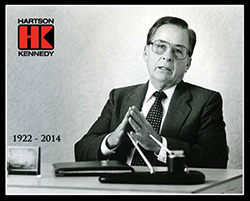 Businesses must approach disaster planning as a probable scenario. Approaching it as a possible scenario is not enough. There are several points of impact resulting from a disruption in power, from (the obvious) loss of connectivity, to (the physical) damaged equipment, or (the elusive) reputation damage. Businesses lose more than just power when an outage occurs. Disaster preparedness involves a planning process resulting in both external and internal communications that help a business continue operating as usual, no matter the situation. To facilitate the planning process, ten steps are discussed, beginning with the “Analysis Of Potential Threats,” and concluding with the ever-important “Recovery Phase.”
Businesses must approach disaster planning as a probable scenario. Approaching it as a possible scenario is not enough. There are several points of impact resulting from a disruption in power, from (the obvious) loss of connectivity, to (the physical) damaged equipment, or (the elusive) reputation damage. Businesses lose more than just power when an outage occurs. Disaster preparedness involves a planning process resulting in both external and internal communications that help a business continue operating as usual, no matter the situation. To facilitate the planning process, ten steps are discussed, beginning with the “Analysis Of Potential Threats,” and concluding with the ever-important “Recovery Phase.”
The most prepared businesses have engaged industry experts to aid in the Disaster Preparedness and Business Continuity planning process. Being proactive is the most cost-effective way to manage risk. While insurance is a very important tool, it is often the most expensive and least proactive solution. Gibson has developed the Gibson Protection System (GPS) specifically to help business leaders identify, assess, and address their specific risks. Another proactive approach is to mitigate physical infrastructure and equipment failure risks. Data Realty specifically designed and built a data center in Northern Indiana to mitigate IT infrastructure risks for businesses. Essentially, there is a plan B for everything (sometimes a plan C), and there is no single point of failure.
The experts at Gibson divide disaster risk management into three main phases: (1) disaster readiness; (2) disaster response; and (3) business continuity. The first phase includes risk management considerations for instances of equipment breakdown or utility service interruption. The second phase involves creating a plan to respond effectively to a disaster. The final phase of establishing a Business Continuity Plan is specific and unique to each organization.
At the end of the day, a disaster preparedness and business continuity plan is a shared responsibility across all decision makers of an organization. The two key areas of focus are risk management (the C-Suite) and data management (the IT-Suite). Working with third-party experts to establish and execute a disaster preparedness plan allows executives to continue focusing on their own business goals and profitability.




